
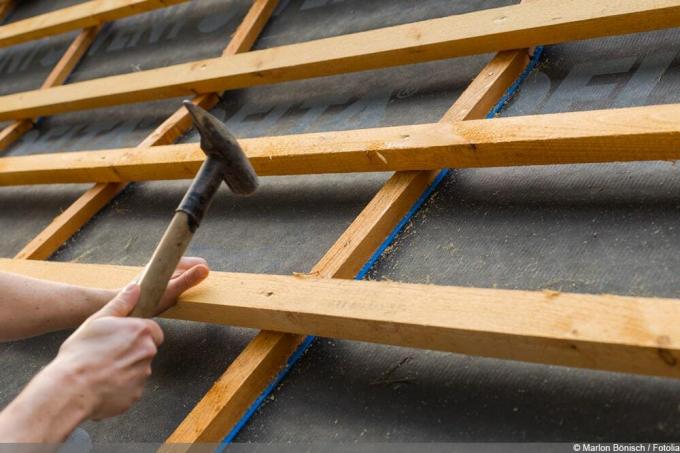
Table of contents
- function
- position
- Dimensions
- Quality
- distances
- Attaching the counter battens – step by step
If a cold roof is to be covered, different layers are applied. This also includes the so-called counter battens, which sit between the rafters and the roof battens or supporting battens and are intended to ensure adequate ventilation. But how large must the distance be designed when attaching it so that moisture can escape easily.
function
The function of the counter battens is to create a ventilation zone or space for the insulation. With a cold roof, this should ensure that moist air from the interior does not hit the roof skin directly, but can escape without any problems. This is important, for example, to avoid moisture damage and mold. The air should be able to circulate in the created space. In order for this to be possible, the distances must be correspondingly large.
position
Roughly speaking, the counter battens sit on the rafters. They run vertically from the ridge to the eaves and thus follow the shape of the roof from top to bottom. Horizontal roof battens or supporting battens are attached to the counter battens.
In detail, the structure of a cold roof can be as follows from the inside to the outside:
1. rafters
2. formwork
3. advance cover
4. counter battens
5. Support / roof battens
6. Roof tiles/stones
The structure of the roof can vary slightly depending on the materials used, but the battens always rest on the counter battens and thus create the necessary distance for ventilation and for the drainage of water that has penetrated from the outside is.
Dimensions
The standard dimensions for the roof and counter battens are edge lengths of 30×50 and 40×60 millimeters, the minimum cross-section is 30×50 mm. In addition, the battens are only laid by professional roofers in a length of 1.35 meters and therefore have to be cut to size. The slats are cut to this length because it makes laying easier. Particularly on very steep roofs, it is difficult to attach longer pieces, so laying is done piece by piece with shorter and more manageable batten lengths.
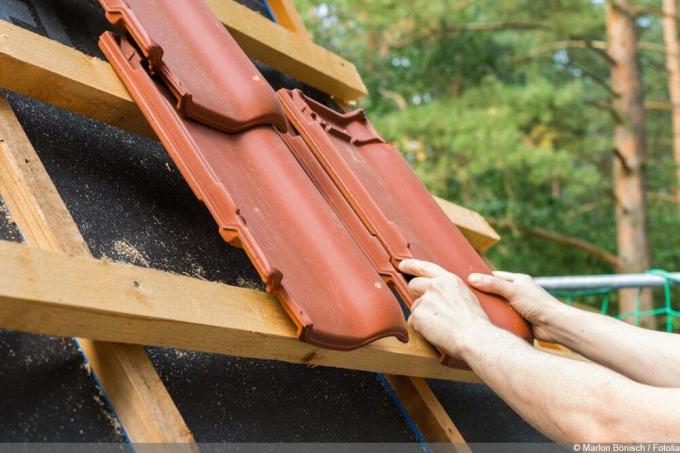
Shorter or slightly longer slats can also be laid, as they are fixed to the rafters and thus provide a stable base. Even offcuts can therefore be processed without any problems and scrap usually only occurs if the quality of the material is suboptimal.
Quality
As with all other building materials, the counter battens must also be of a correspondingly high quality. Do not use slats that:
- are bent
- have many knotholes
- have odd edges
They must correspond to sorting class S 10 for visual sorting and C 24 M for mechanical sorting. In addition, they must be impregnated in order to have sufficient weather resistance.
distances
Keeping the spacing when attaching the counter battens is easy as they are attached directly to the rafters. The distances between the rafters therefore determine the distances between the counter battens. A so-called lath worker can be used as a simple and practical spacer. The Lattenknecht is commercially available, but you can also build it yourself. It not only helps to keep the correct distances, but also facilitates the parallel attachment of the counter battens.
In addition to the distances between the individual battens, the space between the sub-roof and the covering is also important. This must be at least 30 millimeters. This minimum distance is already given when using the standard size of 30×50 mm of the slats.
Attaching the counter battens – step by step

When the rafters, formwork and roofing are finished, the counter battens can be attached. The procedure is as follows:
- Check counter battens and sort out unsuitable specimens, then cut each to a length of 1.36 m. According to the pitch of the roof, the pieces lying against the ridge must be cut at the appropriate angle.
- In order to be able to lay the counter battens at the right distances and parallel, a lath worker should be used. This should be adjusted so that the counter battens lie directly and as centrally as possible on the rafters.
- After each counter batten has been aligned, it is fixed to the rafters with sufficiently long nails. As a rule, 120 mm long, galvanized nails are used. Three nails are placed on a lath meter. A fixation takes place every 30 to 35 centimeters. The fixation should be at the end edges and, in the case of longer battens, also in the middle.
- Once all the counter battens are attached, the horizontal roof battens or support battens are fixed to them. With these, the distances between the individual slats correspond to the attachment points of the roof stones or roof tiles.
- Finally, the roof is covered by attaching bricks or stones.
 Home editorial office
Home editorial office
Learn more about roof / attic
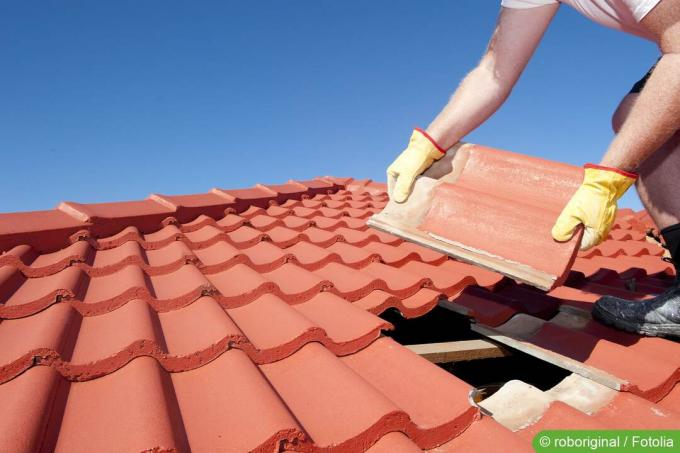
Snow blows under roof tiles: what to do?
Snow drifts often get under the roof tiles when blizzards or strong winds blow them underneath. The moisture often causes damage from meltwater. Air spaces between the roof tiles are to blame. Homeowners should now find out how to counteract this.
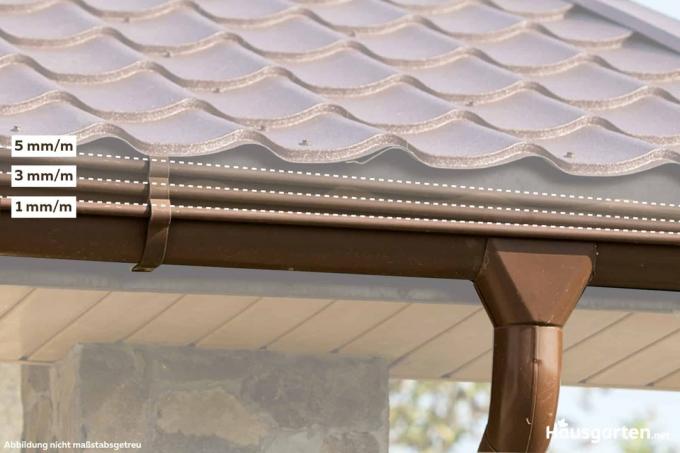
Gutter slope: the ideal gradient
For a gutter to function properly, a slope that has an ideal inclination is required. Various factors have to be taken into account. Before installation, you should find out how the gradient is to be calculated and implemented.
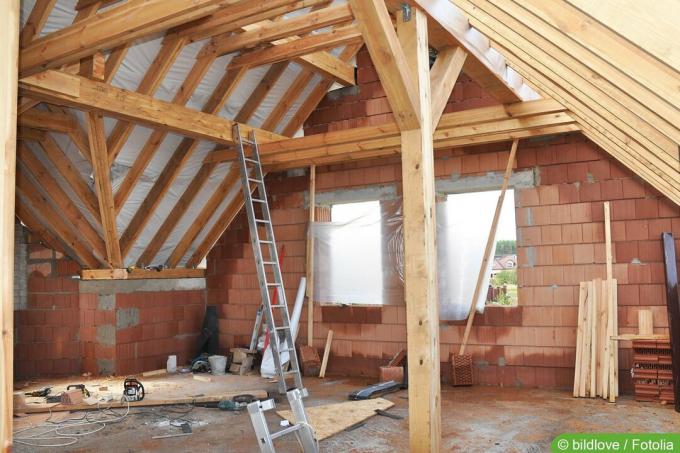
Which attic insulation can be walked on immediately?
Attic insulation effectively reduces heat loss from the building. If the attic is to continue to be used as storage space, the insulation should be accessible as soon as possible. A number of materials can be used for this. They each have advantages and disadvantages as well as different costs.
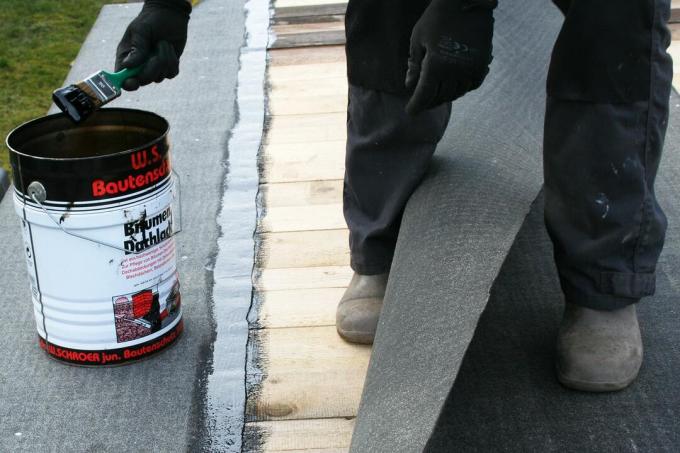
Bitumen stains: 6 removal tips
If you have to process bitumen, you should be careful. The black, viscous mass is sticky and adheres well to clothing, hands and all possible surfaces with which it comes into contact. With our tips you can successfully remove it.
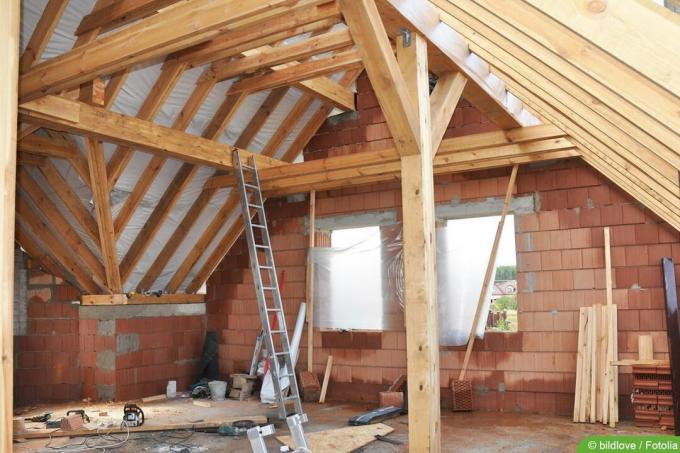
Attic: OSB or Rauspund as roof boarding?
Both OSB and Rauspund boards are suitable as roof boarding. But what are the differences and what is better suited for the attic? Our guide answers these and other questions about the two materials.

Laying a vapor barrier: how far does the vapor barrier have to go?
Laying a vapor barrier is essential in some cases. But how far does the vapor barrier have to be installed, what is it and what are the differences? These and more questions are answered in the following guide.



